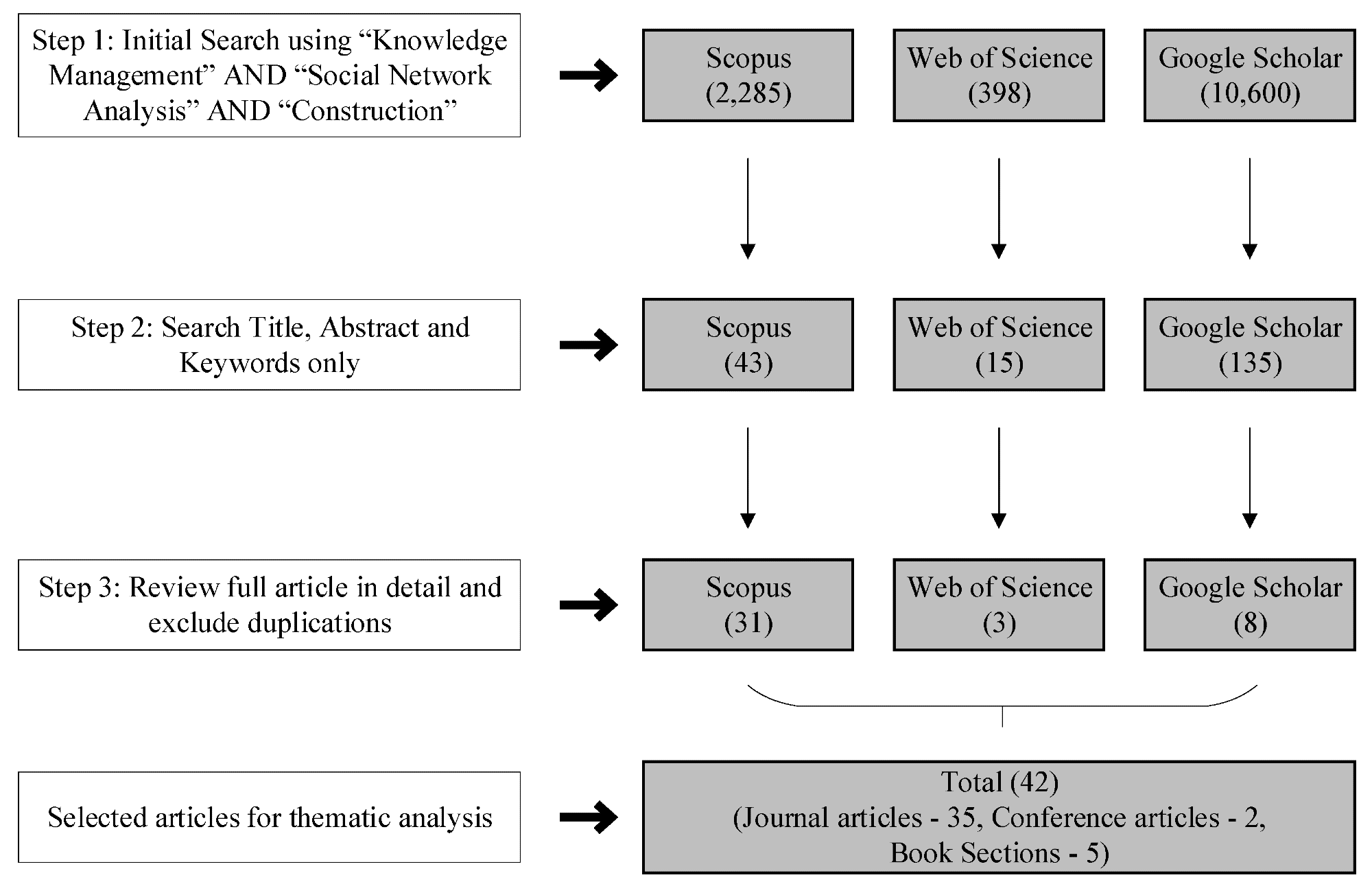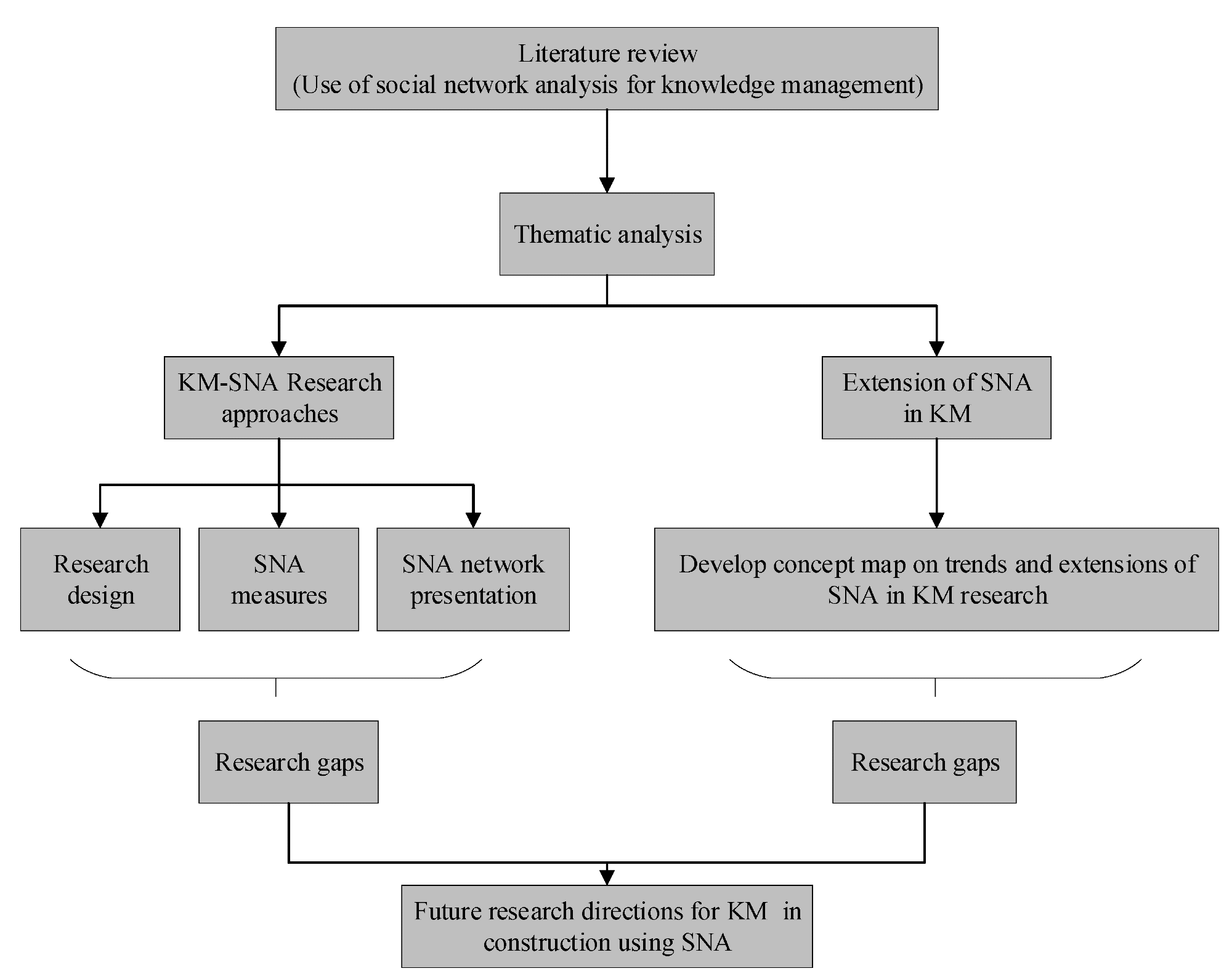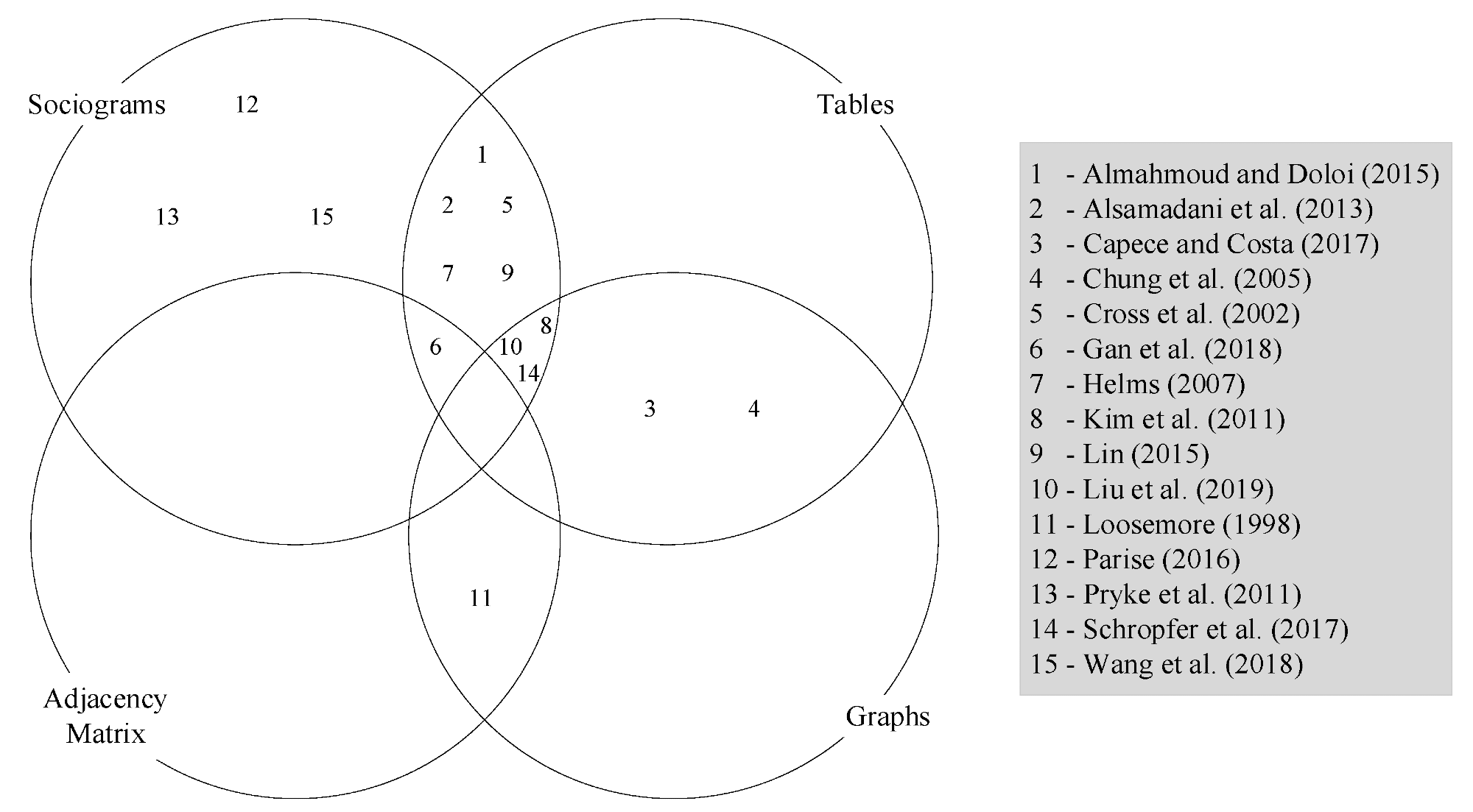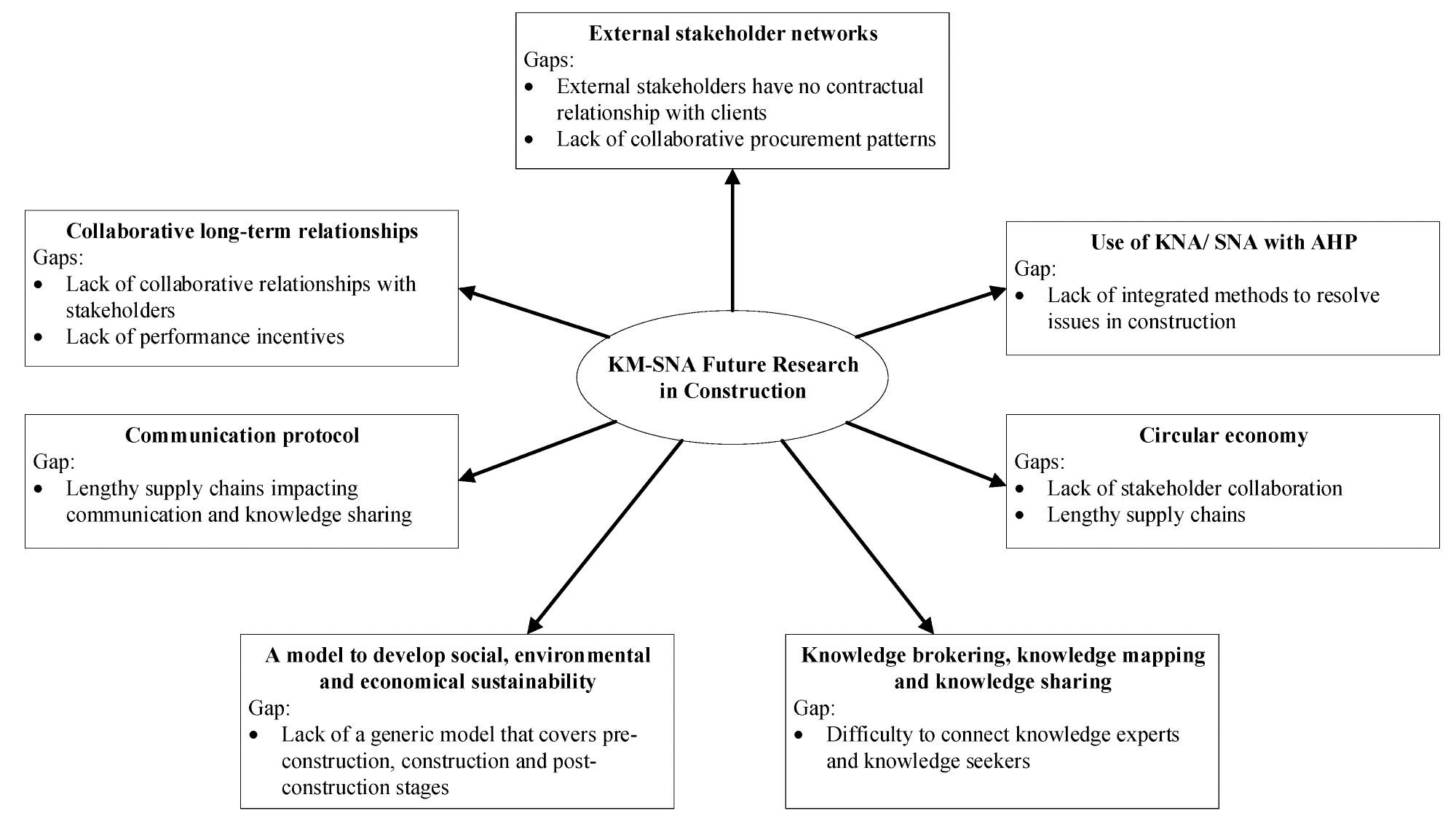Knowledge Management (KM) has gained considerable attention both in academia and industry. KM promotes the productive dissemination of knowledge in an organization pertaining to the requirements of a specific project. This article explores a review on this topic by researchers in the journal Buildings.

Study: Current Trends and Future Directions in Knowledge Management in Construction Research Using Social Network Analysis. Image Credit: rudall30/Shutterstock.com
Effectively managing project knowledge ensures timely and proactive decision-making and optimizes project performance with respect to time, quality, and cost. The focus of KM practices in organizations is mainly the creation and transfer of knowledge.
The construction industry is one such knowledge-based value-adding area of the economy. Knowledge-intensive construction organizations depend mainly on professional knowledge or expertise in a particular technical or functional domain. Many stakeholders involved in the construction industry exchange knowledge through different modes.
Social Network Analysis (SNA) is an innovative tool for monitoring and rigorously analyzing the relationships between stakeholders. An analysis of the relationships in KM flows in construction networks using SNA could help construction organizations to foster durable networks and to power optimize knowledge management processes. This study thus investigates current literature and finds knowledge gaps in using SNA for KM in construction.
Methodology
A project’s social network relates to “the combination of all project relationships that exist between the project actors.” Networking, a social communication process, fosters knowledge sharing in communities.
SNA helps analyze people and the relationships between them by mapping and quantifying formal and informal relationships to perceive what promotes or hampers the flow of knowledge. The data gathered to perform SNA offers baseline information that can be analyzed to optimize knowledge flows—social relations with improved productivity.
SNA offers a mathematical and visual analysis of human relationships. The graphical and mathematical methods involved in SNA enable a compact and systematic representation of the networks and help derive patterns of social relationships connecting the stakeholders rather than words.
The SNA tool identifies the nature of relationships between different construction stakeholders using various measures like closeness centrality, degree centrality, betweenness centrality, and tie strength. These measures are used in SNA-related studies for investigating the relationships between various stakeholders in social networks.
This study followed a methodological approach that involved a qualitative research approach, which included a systematic literature review and thematic analysis. The systematic literature review was related to the use of SNA for KM to perceive the concepts and terminology.
A keyword search using Scopus identified 2285 papers, while Web of Science and Google Scholar identified 398 and 10,600 papers, respectively. As shown in Figure 1, the study considered a total of 42 articles for the systematic review, which included conference papers, journals, and book sections, published from 1998 to 2020.

Figure 1. Selection of articles for systematic review. Image Credit: Senaratne, et al., 2021
Figure 2 illustrates the thematic analysis that was performed after selecting the papers for the systematic review.

Figure 2. Thematic analysis process. Image Credit: Senaratne, et al., 2021
Results
Different studies investigating the use of SNA for KM use different research methods to assess the relationships in social networks. These research methods have been categorized into three areas—SNA measures, research designs, and SNA network presentation modes.
A total of 15 studies were short-listed through the systematic review, of which seven studies used a single case study design and six studies used a multiple case study design. The details are presented in Tables 1 and 2. The remaining two studies used different research approaches like meta-analysis, survey strategy, and expert interviews.
Table 1. Single case study research design. Source: Senaratne, et al., 2021
| Studies in Various Industries |
| Study |
Description |
Features of Case Study Design |
Kim et al.
[7] |
A Knowledge Brokering System (KBS) is introduced to create the link between knowledge seekers and knowledge experts. This system uses several SNA measures to calculate the expertise index, which assists in selecting experts. |
A single project team consisting of 10 members in a Korean financial company were considered to collect data and validate the functions of the KBS. |
| Capece and Costa [32] |
This study proposes an evaluation method based on SNA and team configuration indexes to measure knowledge creation in virtual teams. 4 virtual teams within a single case study have been used to collect data and evaluate the relationships between the actors using SNA. |
4 independent virtual teams (each comprising of 6 members) in an Italian manufacturing company were considered and data were collected using an autoevaluation questionnaire with closed questions using likert scale or multiple-choice questions. |
| Studies in Construction |
| Study |
Description |
Features of Case Study Design |
| Lin [33] |
In this study, job-site social networks including order-management, technical-consultation, and interpersonal-social networks in the Husan dam project in Taiwan are analysed using SNA measures to discover underlying job-site management issues and potential technology interfaces. |
70 participants involved in Husan dam project in Taiwan contributed to the data collection process carried out in the form of a questionnaire. These participants were from 9 organisations, including the owner company, 2 consultancy firms, and 6 subcontractors. |
| Almahmoud and Doloi [34] |
The proposed dynamic assessment model, developed using sustainability and equity theories, was evaluated using SNA to map the relationships between stahkeholders. |
20 participants engaged in 14 different roles, such as contractor, supplier, owner and so forth, in a project in Saudi Arabia were analysed using a questionnaire with a 7-point Likert scale. |
| Wang et al. [35] |
SNA was used in this study to evaluate the suitability of the proposed multi-layered conceptual framework that incorporated social sustainability and construction. |
The network participants in a turnkey building renovation project were analysed using a questionnaire. |
| Loosemore [36] |
In this study, crisis management in the UK construction industry is explored especially focusing on interpersonal communication networks under conditions of crisis. SNA is used to analyse the management of construction crises and concluded that both quantitative and qualitative methods are needed to understand complexity of people’s changing social roles, positions and behaviours. |
SNA, along with an adjacency matrix, was used in a leisure centre project that involved crisis management to analyse its communication networks between various stakeholders. |
Liu et al.
[37] |
An SNA-based method is used to investigate equipment movement between project sites and equipment shops. The study proposed a novel index, direct dispatch index, along with the coefficients of SNA to measure the equipment dispatching performance with the use of equipment logistics data collected from the equipment and project management system of a company in Alberta, Canada. The study revealed that equipment management could be enhanced through improved decision-making. |
Equipment movement data was collected from an internal equipment management system of construction contractor in Alberta, Canada, between 2013 and 2016. |
Table 2. Multiple case studies research design. Source: Senaratne, et al., 2021
| Studies in Various Industries |
| Study |
Description |
Features of Case Study Design |
| Parise [38] |
It used three case studies to explore how SNA contributes to knowledge management efforts related to human resources professionals within organisations. |
3 case studies were selected to observe the relationships between actors within the networks in these 3 different organisations. Questionnaires with follow up interviews have been conducted to collect data. |
| Helms [39] |
Knowledge Network Analysis is a novel technique which was introduced and explored using case studies to identify the bottlenecks of the technique. |
Data were collected from 3 social networks in 3 different offices in the Netherlands using a questionnaire. |
| Cross et al. [40] |
Multiple case studies were considered to observe how organisations could support work occurring in informal networks of employees. In this study, the data were collected from 40 informal networks from 23 organisations. It was revealed that informal relationships among employees provide more reflection of the way work happens in an organisation rather than relationships established by the organisational hierarchy. |
40 informal networks from 23 different organisations were considered for data collection, which was conducted in the form of questionnaire and interviews. |
| Studies in Construction |
| Study |
Description |
Features of Case Study Design |
| Pryke et al. [41] |
Resource provision ego-networks are investigated structurally in this study using social network analysis. |
The ego-centred personal networks of 6 small construction business owners in Greece were interveiwed. |
Schröpfer
et al. [42] |
This study examines knowledge transfer practices in sustainable construction projects using SNA. |
Questionnaires were distributed among workers in 5 construction projects that delivered sustainable office buildings in Germany and the UK. The network sizes were 125, 39, 38, 50, and 35. |
| Alsamadani et al. [43] |
Safety communication between parties in small construction crews was explored using SNA to identify communication patterns in effective and ineffective safety netowrks. |
9 small crews where their network sizes varied between 5 and 12, working in building construction projects in Denver, USA, contributed to the study through questionnaires and follow up interviews. |
The studies short-listed using the systematic review used different SNA measures like degree centrality, density, closeness centrality, tie strength, and betweenness centrality for network relationship interpretation (Table 3).
Table 3. Summary of SNA measures used by various studies. Source: Senaratne, et al., 2021
| References |
SNA Measures |
| Degree Centrality |
Closeness Centrality |
Betweenness Centrality |
Tie Strength |
Density |
Other (Eigenvector Centrality, Clusters, Brokerage, Bridges etc.) |
| Almahmoud and Doloi [34] |
|
|
|
|
|
✓ |
| Alsamadani et al. [43] |
✓ |
✓ |
|
|
✓ |
|
| Capece and Costa [32] |
✓ |
|
✓ |
|
|
|
| Chung et al. [46] |
✓ |
|
✓ |
|
✓ |
|
| Gan et al. [45] |
✓ |
|
✓ |
|
|
✓ |
| Helms [39] |
✓ |
|
|
|
|
✓ |
| Kim et al. [7] |
✓ |
✓ |
✓ |
✓ |
|
|
| Lin [33] |
✓ |
|
✓ |
|
|
✓ |
| Liu et al. [37] |
✓ |
✓ |
✓ |
|
|
✓ |
| Loosemore [36] |
✓ |
✓ |
✓ |
|
|
|
| Parise [38] |
✓ |
|
|
|
✓ |
✓ |
| Pryke et al. [41] |
|
|
|
✓ |
✓ |
|
| Schröpfer et al. [42] |
✓ |
|
✓ |
✓ |
✓ |
|
| Wang et al. [35] |
✓ |
✓ |
✓ |
|
✓ |
|
The selection of SNA measures can differ based on the depth of analysis and the predicted results of the study. Figure 3 presents the results of the studies that employed SNA in KM in different modes.

Figure 3. Presentation outputs produced in studies related to using SNA in KM. Image Credit: Senaratne, et al., 2021
Figure 3 shows that the results were presented in several modes like graphs, sociograms, adjacency matrices, and tables in different studies.
Discussion
A qualitative analysis was carried out on existing literature along with thematic analysis to explore the current trends and extensions of SNA for KM-related research and identify research gaps and future research directions for using SNA for KM in construction.
Figure 5 represents the research gaps and future directions with respect to the use of SNA for KM research in construction.

Figure 5. Gaps and future research directions for KM-SNA in construction. Image Credit: Senaratne, et al., 2021
SNA could help explore the effect of collaborative long-term relationships for effective and efficient project delivery. It could also help evaluate the success of collaborative long-term relationships to investigate whether strong relationships could help forge long-term relationships. SNA could help create an effective generic communication protocol that can be employed by any construction project with slight modifications according to the needs of the project.
SNA helps identify the weak and strong relationships between stakeholders together with any impacts in a network that enables development and an effective communication protocol. A multiple case study approach could help perform testing and validation of the communication protocol. Future research could use SNA to expand and explore further dimensions like project success, quality assurance, health and safety, and payment management in the construction industry.
Conclusion
The goal of this study was to review existing literature to determine the existing trends and future research directions with respect to the use of SNA for KM in construction. The key findings of this study show that the focus of a majority of the existing research has been on internal stakeholders and their relationships to optimize KM and knowledge transfer in construction.
Meanwhile, the increasing collaborative practices in construction could lead to the use of SNA to explore the effect of collaborations on knowledge transfer and project delivery using SNA. This thus could help develop a communication protocol for a construction project as well as its supply chain, with the help of multiple case studies. Listed below are particular implications of SNA for industry practice:
- Construction organizations could consider the use of SNA to determine and strengthen knowledge-sharing networks
- Construction project managers could employ SNA to find, categorize, and prioritize major stakeholders and improve their knowledge sharing and communication processes
- Relevant organizations and professional bodies could use SNA to develop industry-wide knowledge management networks
- Government and other policymakers could motivate the industry to employ SNA and knowledge management networks for achieving a circular economy in the construction industry
Journal Reference:
Senaratne, S., Rodrigo, M. N. N., Jin, X., Perera, S. (2021) Current Trends and Future Directions in Knowledge Management in Construction Research Using Social Network Analysis. Buildings, 11(12), p. 599. Available online: https://www.mdpi.com/2075-5309/11/12/599/htm
References and Further Reading
- Cross, R. (1998) Managing for knowledge: Managing for growth. Journal of Knowledge Management, 1, pp. 9–13.
- Koskines, K U (2004) Knowledge Management to improve Project Communication and Implementation. Project Management Journal, 35, pp. 13–19. doi.org/10.1177/875697280403500203.
- Brookes, N. J., et al. (2006) Social processes, patterns and practices and project knowledge management: A theoretical framework and an empirical investigation. International Journal of Project Management, 24, pp. 474–482. doi.org/10.1016/j.ijproman.2006.03.005.
- Allen, J., et al. (2007) Formal versus informal knowledge networks in R&D: A case study using social network analysis. R&D Management, 37, pp. 179–196. doi.org/10.1111/j.1467-9310.2007.00468.x.
- Barão, A., et al. (2017) A knowledge management approach to capture organizational learning networks. International Journal of Information Management, 37, pp. 735–740. doi.org/10.1016/j.ijinfomgt.2017.07.013.
- Alavi, M., et al. (2001) Review: Knowledge Management and Knowledge Management Systems: Conceptual Foundations and Research Issues. MIS Q, 25, pp. 107–136. doi.org/10.2307/3250961.
- Kim, S., et al. (2011) Building a Knowledge Brokering System using social network analysis: A case study of the Korean financial industry. Expert Systems with Applications, 38, pp. 14633–14649. doi.org/10.1016/j.eswa.2011.05.019.
- Pathirage, C. P., et al. (2008) The role of tacit knowledge in the construction industry: Towards a definition. In: Proceedings of the CIB W89 International Conference on Building Education and Research (BEAR), Heritance Kandalama, Sri Lanka, pp. 11–15 February.
- Egbu, C O & Robinson, H S (2005) Construction as a Knowledge-Based Industry. In: Knowledge Management in Construction; Anumba, C. J., et al. (Eds); Wiley-Blackwell Publishing Ltd.: Oxford, UK, pp. 31–48.
- Senaratne, S & Ruwanpura, M (2015) Communication in construction: A management perspective through case studies in Sri Lanka. Architectural Engineering and Design Management, 12, pp. 3–18. doi.org/10.1080/17452007.2015.1056721.
- Senaratne, S & Sexton, M (2008) Managing construction project change: A knowledge management perspective. Construction Management and Economics, 26, pp. 1303–1311. doi.org/10.1080/01446190802621044.
- Pathirage, C. P., et al. (2007) Tacit knowledge and organisational performance: Construction industry perspective. Journal of Knowledge Management, 11, pp. 115–126. doi.org/10.1108/13673270710728277.
- Robinson, H. S., et al. (2005) Knowledge management practices in large construction organizations. Engineering, Construction and Architectural Management, 12, pp. 431–445. doi.org/10.1108/09699980510627135.
- Shi, Q., et al. (2021) Knowledge sharing in the construction supply chain: Collaborative innovation activities and BIM application on innovation performance. Engineering, Construction and Architectural Management. doi.org/10.1108/ECAM-12-2020-1055.
- Argote, L & Ingram, P (2000) Knowledge Transfer: A Basis for Competitive Advantage in Firms. Organizational Behavior and Human Decision Processes, 82, pp. 150–169. doi.org/10.1006/obhd.2000.2893.
- Senaratne, S., et al. (2017) Exploring the role of networks in disseminating construction project knowledge through case studies. Engineering, Construction and Architectural Management, 24, pp. 1281–1293. doi.org/10.1108/ECAM-10-2014-0125.
- Welege, N. M. H., et al. (2021) Social network analysis applications in sustainable construction and built environment management: A review. Built Environment Project and Asset Management, 11, pp. 511–528. doi.org/10.1108/BEPAM-03-2020-0047.
- Wasserman, S & Faust, K (1994) Social Networks Analysis: Methods and Applications; Cambridge University Press: Cambridge/London, UK.
- Prell, C (2012) Social Network Analysis–History, Theory & Methodology, 1st ed; SAGE Publications Ltd.: London, UK.
- Senaratne, S & Sexton, M G (2009) Role of knowledge in managing construction project change. Engineering, Construction and Architectural Management, 16, pp. 186–200. doi.org/10.1108/09699980910938055.
- Herrera, R. F., et al. (2021) Comparing Team Interactions in Traditional and BIM-Lean Design Management. Buildings, 11, p. 447. doi.org/10.3390/buildings11100447.
- Müller-Prothmann, T (2007) Leveraging Knowledge Communication for Innovation: Framework, Methods, and Applications of Social Network Analysis in Research and Development, 1st ed; Peter Lang Publishing: New York, NY, USA.
- Serrat, O (2017) Social Network Analysis. In: Knowledge Solutions; Springer: Singapore, pp. 39–43.
- Jamali, M & Abolhassani, H (2006) Different Aspects of Social Network Analysis. In: Proceedings of the 2006 IEEE/WIC/ACM International Conference on Web Intelligence (WI 2006 Main Conference Proceedings) (WI’06), Hong Kong, China, 18–22 December.
- Hanneman, R A & Riddle, M (2005) Introduction to Social Network Methods; University of California: Riverside, CA, USA.
- Camarasa, C., et al. (2020) Key Decision-Makers and Persuaders in the Selection of Energy-Efficient Technologies in EU Residential Buildings. Buildings, 10, p. 70. doi.org/10.3390/buildings10040070.
- Maskil-Leitan, R., et al. (2020) BIM Management Measure for an Effective Green Building Project. Buildings, 10, p. 147. doi.org/10.3390/buildings10090147.
- Müller-Prothmann, T (2007) Social Network Analysis: A Practical Method to Improve Knowledge Sharing. In: Hands-On Knowledge Co-Creation and Sharing: Practical Methods and Techniques; Kazi, A. S., et al. (Eds); Knowledge Board: Stuttgart, Germany, pp. 219–233.
- Ruan, X., et al. (2013) Time for a Real Shift to Relations: Appraisal of Social Network Analysis Applications in the UK Construction Industry. Australasian Journal of Construction Economics and Building, 13, pp. 92–105. doi.org/10.5130/ajceb.v13i1.3174.
- Borgatti, S P & Li, X (2009) On Social Network Analysis in a Supply Chain Context. Journal of Supply Chain Management, 45, pp. 5–22. doi.org/10.1111/j.1745-493X.2009.03166.x.
- Chinowsky, P., et al. (2008) Social Network Model of Construction. Journal of Construction Engineering and Management, 134, pp. 804–812. doi.org/10.1061/(ASCE)0733-9364(2008)134:10(804).
- Capece, G & Costa, R (2017) Measuring knowledge creation in virtual teams through the social network analysis. Knowledge Management Research & Practice, 7, pp. 329–338. doi.org/10.1057/kmrp.2009.25.
- Lin, S-C (2015) An Analysis for Construction Engineering Networks. Journal of Construction Engineering and Management, 141, p. 04014096 doi.org/10.1061/(ASCE)CO.1943-7862.0000956.
- Almahmoud, E & Doloi, H K (2015) Assessment of social sustainability in construction projects using social network analysis. Facilities, 33, pp. 152–176. doi.org/10.1108/F-05-2013-0042.
- Wang, H., et al. (2018) Improving Social Sustainability in Construction: Conceptual Framework Based on Social Network Analysis. Journal of Management in Engineering. 34, p. 05018012.
- Loosemore, M (1998) Social network analysis: Using a quantitative tool within an interpretative context to explore the management of construction crises. Engineering, Construction and Architectural Management, 5, pp. 315–326. doi.org/10.1108/eb021085.
- Liu, C., et al. (2019) Equipment Logistics Performance Measurement Using Data-Driven Social Network Analysis. Journal of Construction Engineering and Management, 145, p. 04019033.
- Parise, S (2016) Knowledge Management and Human Resource Development: An Application in Social Network Analysis Methods. Advances in Developing Human Resources, 9, pp. 359–383. doi.org/10.1177/1523422307304106.
- Helms, R (2007) Redesigning Communities of Practice using Knowledge Network Analysis. In: Hands-On Knowledge Co-Creation and Sharing: Practical Methods and Techniques; Kazi, A. S., et al. (Eds); Knowledge Board: Stuttgart, Germany.
- Cross, R., et al. (2002) Making Invisible Work Visible: Using Social Network Analysis to Support Strategic Collaboration. California Management Review, 44, pp. 25–46. doi.org/10.2307/41166121.
- Pryke, S. D., et al. (2011) Resource provision ego-networks in small Greek construction firms. Building Research & Information, 39, pp. 616–636. doi.org/10.1080/09613218.2011.628558.
- Schröpfer, V. L. M., et al. (2017) Mapping the knowledge flow in sustainable construction project teams using social network analysis. Engineering, Construction and Architectural Management, 24, pp. 229–259. doi.org/10.1108/ECAM-08-2015-0124.
- Alsamadani, R., et al. (2013) Measuring and modelling safety communication in small work crews in the US using social network analysis. Construction Management and Economics, 31, pp. 568–579.
- Chung, K S K & Hossain, L (2010) Towards a social network model for understanding information and communication technology use for general practitioners in rural Australia. Computers in Human Behavior, 26, pp. 562–571. doi.org/10.1016/j.chb.2009.12.008.
- Gan, X., et al. (2018) Overcoming barriers to off-site construction through engaging stakeholders: A two-mode social network analysis. Journal of Cleaner Production, 201, pp. 735–747. doi.org/10.1016/j.jclepro.2018.07.299.
- Chung, K. K. S., et al. (2005) Exploring Sociocentric and Egocentric Approaches for Social Network Analysis. In: Exploring Sociocentric and Egocentric Approaches for Social Network Analysis; Victoria University of Wellington: Wellington, New Zealand, pp. 1–8.
- Hargadon, A B (1998) Firms as Knowledge Brokers: Lessons in Pursuing Continuous Innovation. California Management Review, 40, pp. 209–227. doi.org/10.2307/41165951.
- Helms, R & Buijsrogge, K (2005) Knowledge Network Analysis: A technique to analyze knowledge management bottlenecks in organizations. In: Proceedings of the 16th International Workshop on Database and Expert Systems Applications (DEXA’05), Copenhagen, Denmark, 22–26 August.
- Helms, R., et al. (2010) Limitations of Network Analysis for Studying Efficiency and Effectiveness of Knowledge Sharing. Electronic Journal of Knowledge Management, 8, pp. 53–68.
- Bosua, R & Scheepers, R (2017) Towards a model to explain knowledge sharing in complex organizational environments. Knowledge Management Research & Practice, 5, pp. 93–109. doi.org/10.1057/palgrave.kmrp.8500131.
- Yun, G., et al. (2011) Knowledge-mapping model for construction project organizations. Journal of Knowledge Management, 15, pp. 528–548. doi.org/10.1108/13673271111137475.
- Liebowitz, J (2005) Linking social network analysis with the analytic hierarchy process for knowledge mapping in organizations. Journal of Knowledge Management, 9, pp. 76–86. doi.org/10.1108/13673270510582974.
- Yuan, J., et al. (2018) Social network analysis for social risks of construction projects in high-density urban areas in China. Journal of Cleaner Production, 198, pp. 940–961. doi.org/10.1016/j.jclepro.2018.07.109.
- Akgul, B. K., et al. (2016) Social network analysis of construction companies operating in international markets: Case of Turkish contractors. Journal of Civil Engineering & Management, 23, pp. 327–337. doi.org/10.3846/13923730.2015.1073617.
- Kulcu, S., et al. (2016) A Survey on Semantic Web and Big Data Technologies for Social Network Analysis. In: Proceedings of the 2016 IEEE International Conference on Big Data (Big Data), Washington, DC, USA, 5–8 December.
- Bilal, M., et al. (2016) Big Data in the construction industry: A review of present status, opportunities, and future trends. Advanced Engineering Informatics, 30, pp. 500–521. doi.org/10.1016/j.aei.2016.07.001.
- Zheng, X., et al. (2016) Review of the application of social network analysis (SNA) in construction project management research. International Journal of Project Management, 34, pp. 1214–1225. doi.org/10.1016/j.ijproman.2016.06.005.
- Nunes, M., et al. (2021) Measuring project performance by applying social network analyses. International Journal of Innovation Studies, 5, pp. 35–55. doi.org/10.1016/j.ijis.2021.05.001.
- Wu, Y., et al. (2020) Social network efficiency of multiple stakeholders on agricultural drought risk governance—A southern China case study. International Journal of Disaster Risk Reduction, 51, p. 101772. doi.org/10.1016/j.ijdrr.2020.101772.
- Eray, E., et al. (2021) Interface Health and Workload between Stakeholders in Complex Capital Projects: Assessment, Visualization, and Interpretation Using SNA. Journal of Management in Engineering, 37, p. 04021006.
- Martini, U & Buffa, F (2015) Local networks, stakeholder dynamics and sustainability in tourism. Opportunities and limits in the light of stakeholder theory and SNA. Sinergie, 33, pp. 113–130.
- Argyris, Y A & Monu, K (2015) Corporate Use of Social Media: Technology Affordance and External Stakeholder Relations. Journal of Organizational Computing and Electronic Commerce, 25, pp. 140–168. doi.org/10.1080/10919392.2015.1033940.
- Pryke, S D (2012) Social Network Analysis in Construction, 1st ed; John Wiley & Sons Ltd.: West Sussex, UK.
- Ahuja, V & Yang, J (2006) Communication Protocol for Building Project Management—The Potential of I.T. Enhanced Approaches for the Indian Building Practice. In: BEAR 2006: Construction Sustainability and Innovation, Proceedings of the CIB W89 International Conference on Building Education and Research, Hong Kong, China, 10–13 April; Hong Kong Polytechnic University: Hong Kong, China.
- Senaratne, S (2021) Promoting stakeholder collaboration in adopting circular economy principles for sustainable construction. In: Proceedings of the 9th World Construction Symposium 2021, Colombo, Sri Lanka, 9–10 July.